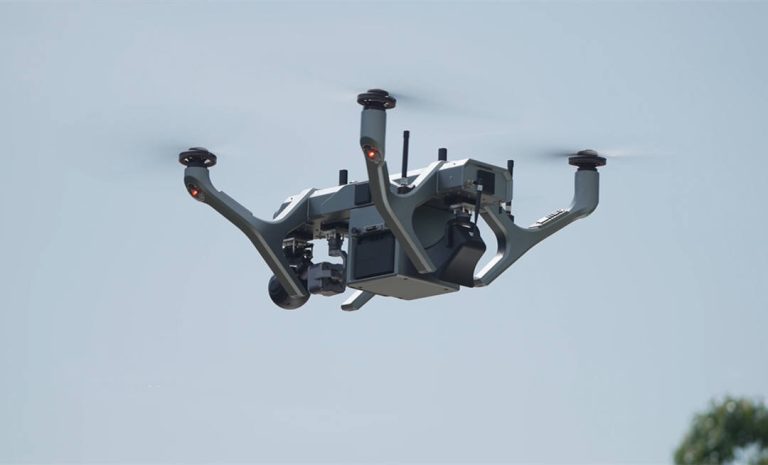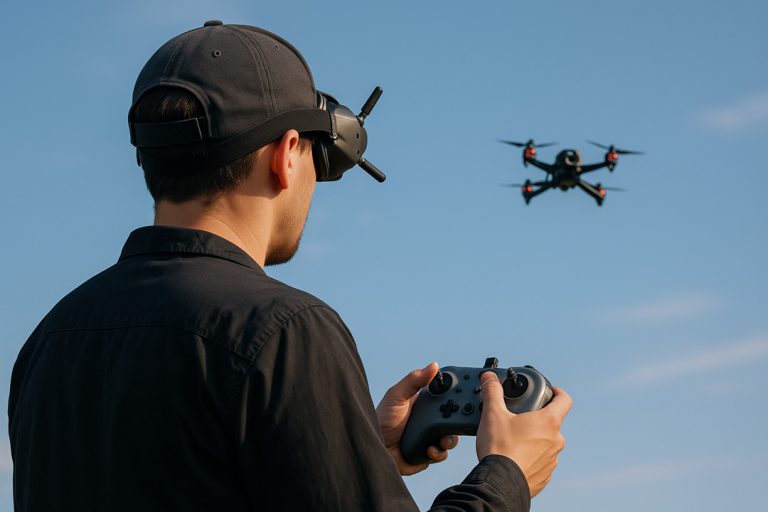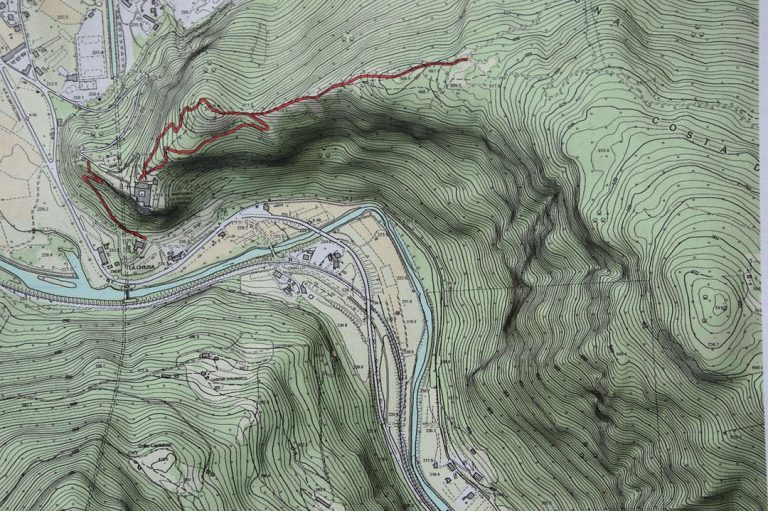How High Can A Drone Fly | Highest Altitude Drones
So, you've got a drone in your hands, ready to take flight and explore the world from a whole new perspective. But before you send it soaring, there's one important thing you need to know: how high your drone can fly.
Legally speaking, drone flights are bound by specific regulations that dictate their maximum altitude. In the United States, as well as many other countries, the law sets a strict limit of 400 feet above ground level. Despite this legal ceiling, drones can technically reach altitudes up to 10 kilometers (33,000 feet). However, individual limitations, such as battery life and controller connection strength, influence each drone's actual operational altitude.
Now, if you're curious to learn more, we can delve deeper into the fascinating world of drone altitudes. This article will explore various aspects related to altitude limits, including the regulations in place, any regional variations that may exist, and the highest altitude drones in the market.
Let’s jump right into it.
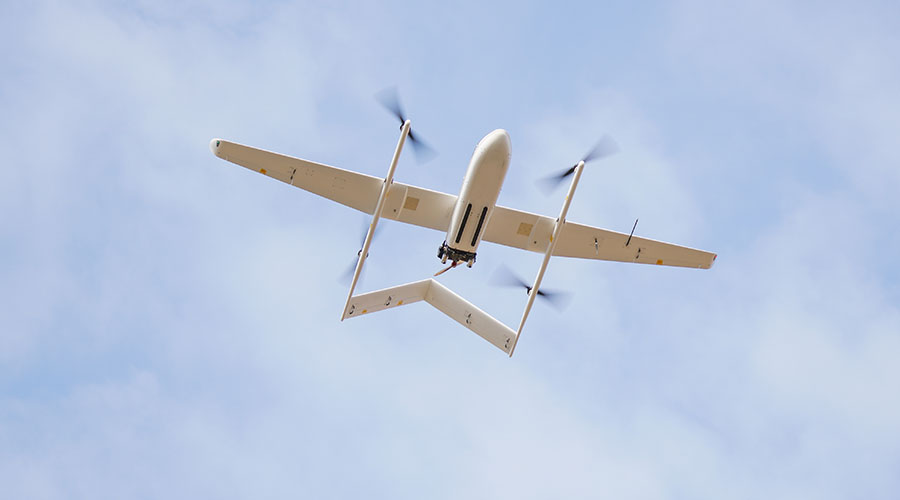
FAA Regulations on How High a Drone Can Fly
Let's dive into the realm of FAA regulations and uncover the heights to which drones can soar. The Federal Aviation Administration (FAA) has implemented rules and guidelines to ensure safe and responsible drone operations. These regulations differentiate between recreational and commercial drone pilots, so let's break them down.
Are There Different Rules for Professional and Recreational Drone Pilots?
For recreational drone pilots, the FAA Reauthorization Act of 2018 brought about some crucial changes. Previously, guidelines were loosely followed, but now compliance is mandatory. According to the regulations, recreational drone flights should remain under 400 feet in uncontrolled airspace. As for controlled airspace, recreational drone pilots face a blanket restriction. While there is a process to request authorization for flying in controlled airspace, the 400-foot rule remains unwavering, with no provision for waivers. Recreational pilots must adhere strictly to this altitude limit.
On the other hand, commercial drone pilots licensed under Part 107 have a bit more leeway. They can fly their drones above 400 feet if they are within 400 feet of a structure. This exception was made to accommodate commercial operations like tower inspections and industrial equipment checks. The reasoning is that manned aircraft will maintain sufficient clearance around these structures, allowing drones to operate at higher altitudes. However, it's important to note that commercial drone pilots must possess the necessary skills and expertise to navigate such situations safely.
It's important to note that when we mention the 400-foot limit, it refers to altitude above ground level, not the drone's own altimeter reading. For example, if you launch your drone from a building 100 feet high, you still need to adhere to the 400-foot limit above ground level. So, effectively, you have a maximum altitude gain of only 300 feet from your takeoff point.
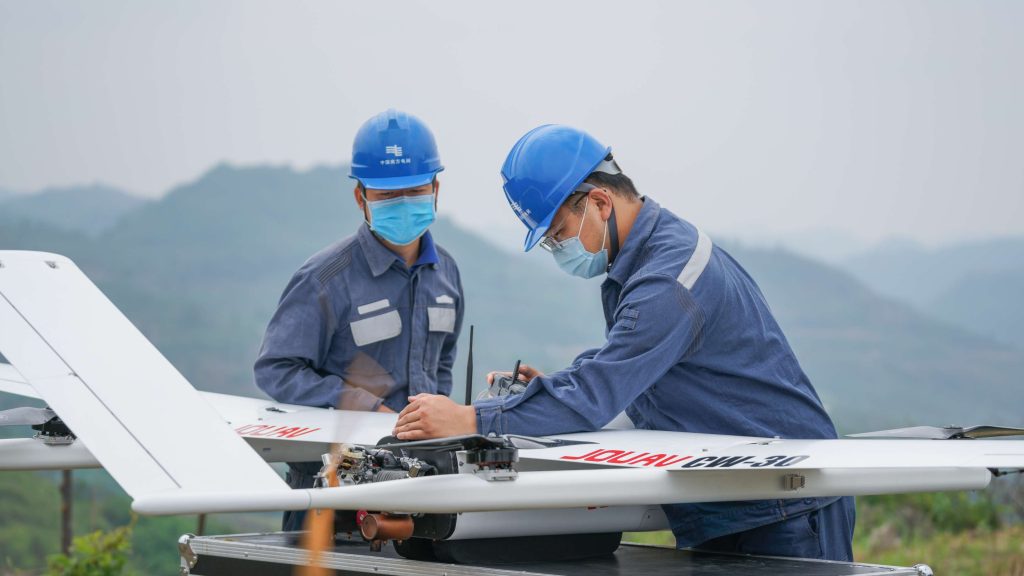
What Happens If You Fly A Drone Above 400 Feet?
Flying a drone above the legal altitude limit can have serious consequences. The FAA enforces these rules to maintain safety and prevent conflicts in the airspace. If you're caught flying your drone above 400 feet without proper authorization or a valid reason, you could face penalties, fines, and potential legal repercussions. It's crucial to respect the regulations and fly responsibly.
How High Can a Drone Fly at Night?
When it comes to flying a drone at night, the FAA keeps things in check with the same altitude rules as daytime flights - 400 feet is the limit. But there's more to it. To ensure safety, drones flying at night must have anti-collision lights that can be seen from at least three statute miles away. These lights help others spot the drone and maintain a safe distance.
And if you're a commercial pilot itching for those nighttime missions, you'll need FAA waivers or authorizations. It's all about proving your expertise and understanding the unique safety protocols for nighttime drone operations. So, when the sun sets, keep those drones shining bright and within the 400-foot altitude limit for a safe and thrilling nighttime adventure!
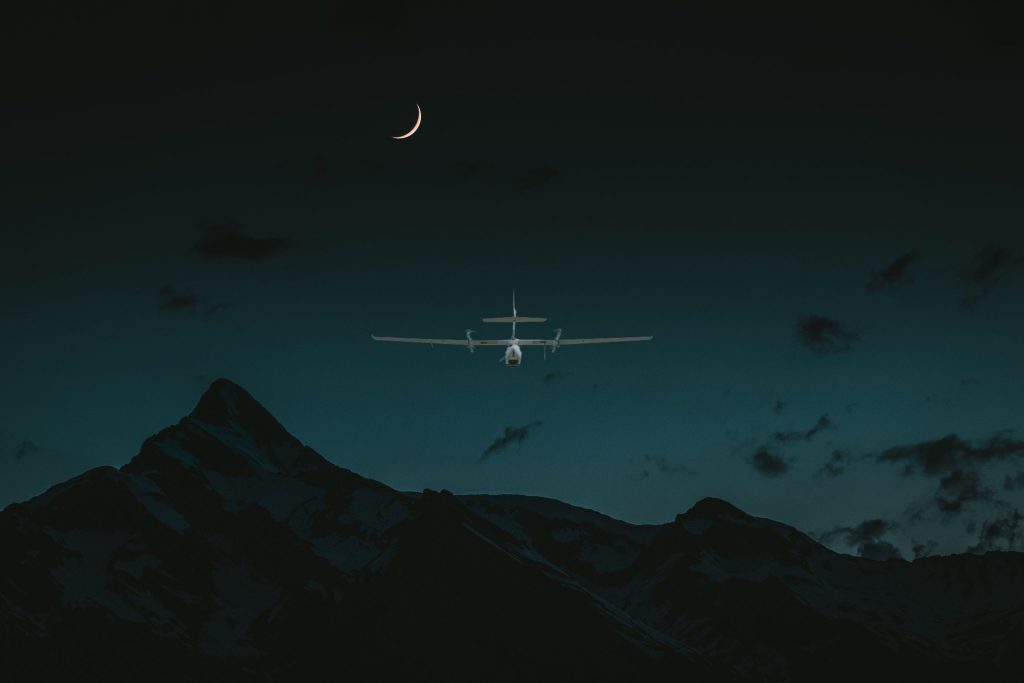
How High Can a Drone Legally Fly in Different Countries?
When it comes to drone altitude regulations, different countries have their own set of rules to ensure safe and responsible drone operations. Let's take a look at how high you can legally fly a drone in some key countries around the world:
Country | Maximum Drone Altitude (feet/meters) |
Argentina | 400 feet (120 meters) |
Australia | 400 feet (120 meters) |
Brazil | 400 feet (120 meters) |
Canada | 400 feet (120 meters) |
China | 400 feet (120 meters) |
France | 492 feet (150 meters) |
Germany | 328 feet (100 meters) |
India | 400 feet (120 meters) |
Indonesia | 500 feet (150 meters) |
Italy | 492 feet (150 meters) |
Japan | 492 feet (150 meters) |
Mexico | 492 feet (150 meters) |
Netherlands | 400 feet (120 meters) |
Poland | 492 feet (150 meters) |
Russia | 492 feet (150 meters) |
South Africa | 400 feet (120 meters) |
Spain | 400 feet (120 meters) |
Turkey | 400 feet (120 meters) |
United Kingdom | 400 feet (120 meters) |
Panama | 400 feet (120 meters) |
Please note that these altitude limits are subject to change and may be different in specific regions or under special circumstances. It's always essential to stay updated with the latest drone regulations in your intended flying location to ensure compliance with the local rules.
How High Can a Drone Fly Physically?
In an ideal world with no pesky regulations and restrictions, you might find yourself wondering about the physical limits of your drone's flight capabilities, rather than legal ones. So, let's explore just how high a drone can fly in a perfect, limit-free scenario. Drones equipped with spinning propellers have a physical height limit of approximately 10 kilometers (33,000 feet).
Why? Well, as you ascend into higher altitudes, the air becomes thinner, providing less force to keep the drone afloat by pushing against the propeller blades. It's a battle against the diminishing density of the air.
However, it's crucial to note that such behavior is extremely dangerous, and it's always recommended to fly within the legal height limits established in your local area. Safety first, folks!
Now, when we delve into the physical limits of drone flight, we need to consider three important factors:
- Absolute Ceiling: This refers to the highest altitude at which an aircraft can sustain level flight. It's the point where the thrust of the engines equals the total drag, causing the drone to stop climbing. However, this ceiling is typically too dangerous to test and isn't specified by manufacturers.
- Max Service Ceiling Above Sea Level: Also known as the maximum takeoff altitude, this is the highest altitude at which the drone can still ascend, albeit with a limited rate of 100 feet per minute. Manufacturers like DJI use this metric to establish the recommended maximum launch altitude for the drone.
- Maximum Range: If the drone's signal range is more limited than its ability to fly higher, the maximum altitude it can reach will be limited by the range. In other words, the height will be similar to the maximum distance it can maintain a stable connection with the controller.
What's the Maximum Altitude of Different Drone Types?
Now that we've got the legal side covered, let's take a closer look at the technical aspects and explore just how high different types of drones can soar. Strap in, because we're about to take off!
Toy Drones
Let's kick things off with those adorable toy drones that bring out the kid in all of us. While they may be pint-sized, don't underestimate their ability to reach impressive heights. On average, toy drones can fly up to 100 to 150 feet, giving you a taste of the thrill of being a pilot without leaving your backyard.
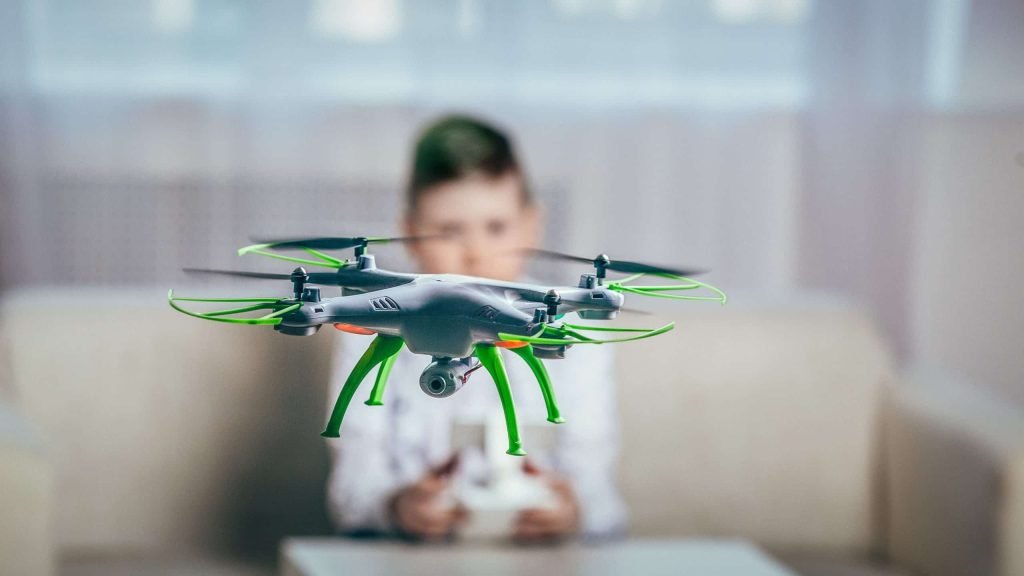
Recreational and Hobbyist Drones:
Recreational and hobbyist drones, beloved by drone enthusiasts around the world, offer a thrilling aerial experience. These drones are typically designed for personal use and have altitude limitations that ensure safe and responsible flying. On average, recreational and hobbyist drones can reach altitudes ranging from 6,000 feet above ground level. So, get ready to capture breathtaking views and nail those epic aerial shots within this altitude range.
Racing Drones:
If you're an adrenaline junkie seeking high-speed excitement, racing drones are your ticket to an exhilarating experience. These nimble and agile machines are built for speed, but their maximum altitudes tend to be lower compared to other drone types. Racing drones typically operate within altitudes of 100 to 200 feet above ground level, ensuring pilots can maintain control while zipping through challenging race courses.
Commercial Drones:
Commercial drones are the powerhouses of the sky, designed to tackle demanding tasks like aerial photography, videography, and surveying. These drones can reach impressive altitudes, surpassing their recreational counterparts. And guess what? The highest-flying drone for commercial use can soar to astonishing heights of over 22,000 feet! With such capabilities, businesses can capture breathtaking footage and gather valuable data from elevated perspectives.
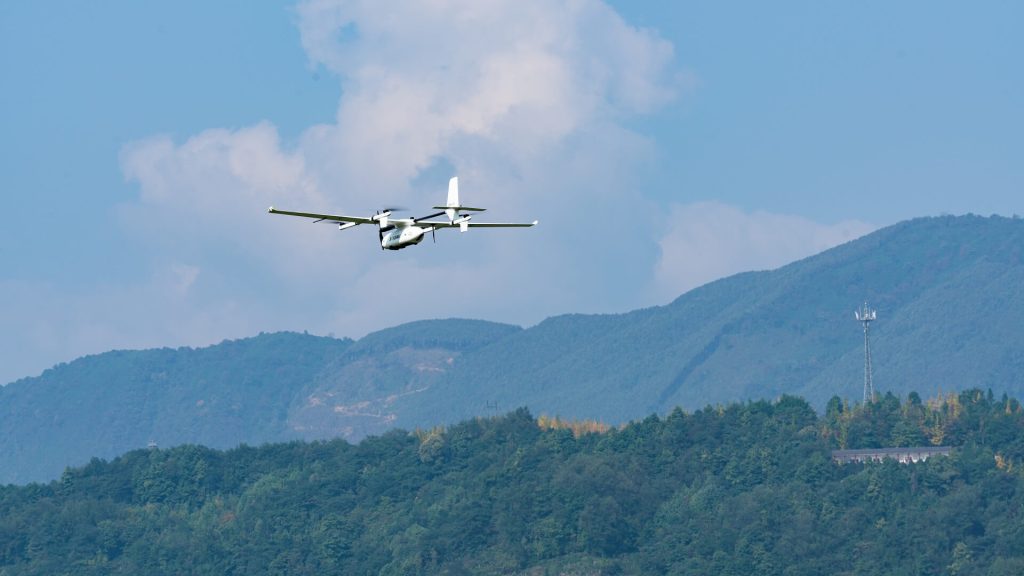
Police and Government Drones:
Police and government agencies employ drones for various purposes, including aerial surveillance, search and rescue missions, and crowd monitoring. While altitude limits may vary based on specific regulations and operational requirements, these police drones typically operate within a range of 11,200 feet above ground level, similar to recreational and consumer drones. This altitude range allows law enforcement agencies to effectively carry out their duties while ensuring public safety.
Military Drones:
Military drones, designed for reconnaissance, surveillance, and combat missions, possess remarkable altitude capabilities. These cutting-edge unmanned aerial vehicles (UAVs) can achieve staggering heights, often exceeding 50,000 feet or more. With military-grade technology and advanced engineering, these drones operate in altitudes where conventional aircraft operate, enabling strategic aerial operations and intelligence gathering.
What Makes a Drone Fly Higher?
What makes a drone fly higher? Let's dive into the factors that give drones the ability to reach greater altitudes and explore the skies.
Drone Specifications and Technological Advancements
First up, we've got the drone specifications and technological advancements. Think about the design of your drone, the power of its motors, and the efficiency of its propellers. These factors can all impact how high your drone can climb. Sleek aerodynamic designs, powerful motors, and propellers that slice through the air like ninja blades can give your drone the lift it needs to reach impressive altitudes. And let's not forget about the incredible advancements in altitude control systems and GPS technology. These fancy features provide your drone with stability and control, allowing it to soar higher with confidence.
Battery Life and Flight Duration
Next, we have battery life and flight duration. Your drone's battery capacity and efficiency directly affect how long it can stay in the air and how high it can climb. Drones with the longest flight time usually have larger batteries, which means they can reach higher altitudes before needing to come back down for a recharge.
Weight Limitations and Payload Capacity
Weight limitations and payload capacity also come into play. Remember, every drone has a limit to the weight it can carry. Exceeding this limit can impact its altitude capabilities. So, if you're attaching a fancy high-resolution camera or any other additional equipment, keep in mind that the extra weight might reduce your drone's maximum altitude. It's all about finding the right balance between payload capacity and flight performance to achieve that optimal altitude.
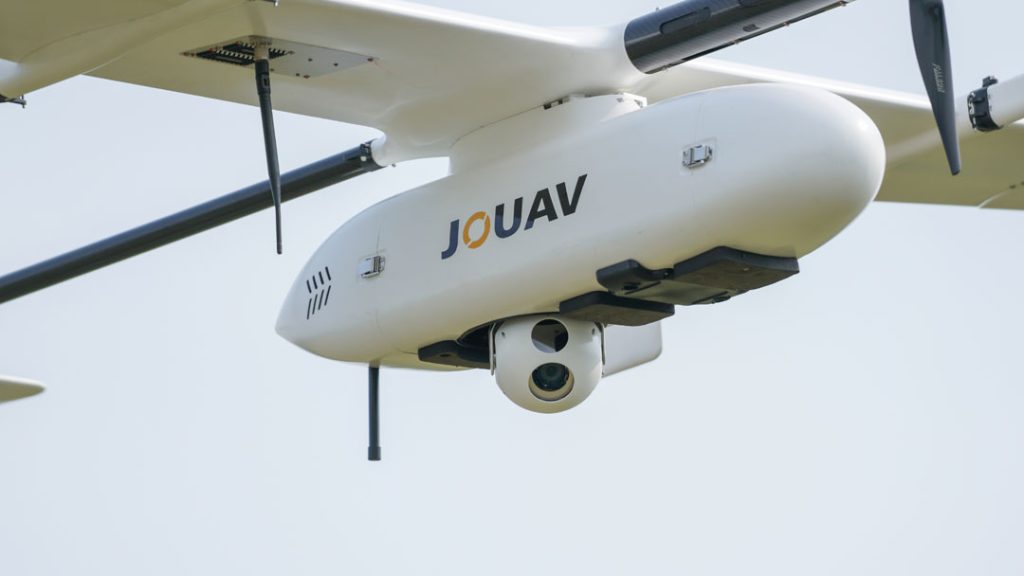
Transmission & Radio Frequency
Let's not forget about transmission and radio frequency. You see, your drone communicates with the remote controller via radio signals. But here's the catch - these signals can only reach a certain distance. As your drone climbs higher, the distance between it and the controller increases, potentially weakening or even losing the signal. Most consumer drones have a range of a few kilometers, so be mindful of this limitation when planning those thrilling high-altitude flights.
Environmental Factors
Last but not least, environmental factors can have an impact too. Think about the temperature, humidity, air pressure, and even the wind conditions. Warmer temperatures and high humidity can affect the air density, which, in turn, can affect your drone's lift and overall performance. Changes in air pressure at different altitudes can also play a role in flight stability and altitude capabilities. And let's not forget about the wind - strong gusts can make it challenging for your drone to maintain stability and reach higher altitudes.
Best High Altitude Drone for Surveillance in 2023 (A Complete Buying Guide)
If you're looking for a drone that can soar to breathtaking heights, providing you with incredible surveillance capabilities, we've got you covered. In this comprehensive buying guide, we'll explore the top contenders for the highest-flying drones on the market.
JOUAV CW-15 VTOL - Highest Altitude Drone with Real-time Camera (6500 Meters)
With a max takeoff altitude of 4500 meters, the JOUAV CW-15 VTOL stands tall as one of the highest-flying drones on the market. This silent and efficient electric motor-powered drone boasts a range of impressive features. From a video transmission range of up to 50 kilometers to a payload capacity of 3 kilograms, it's equipped to handle surveillance tasks with ease.
Its MG-120E dual gimbal camera, complete with zoom capabilities and AI recognition and tracking, ensures crystal-clear footage. Plus, its obstacle avoidance systems and vertical takeoff and landing capabilities make it a versatile and reliable choice.
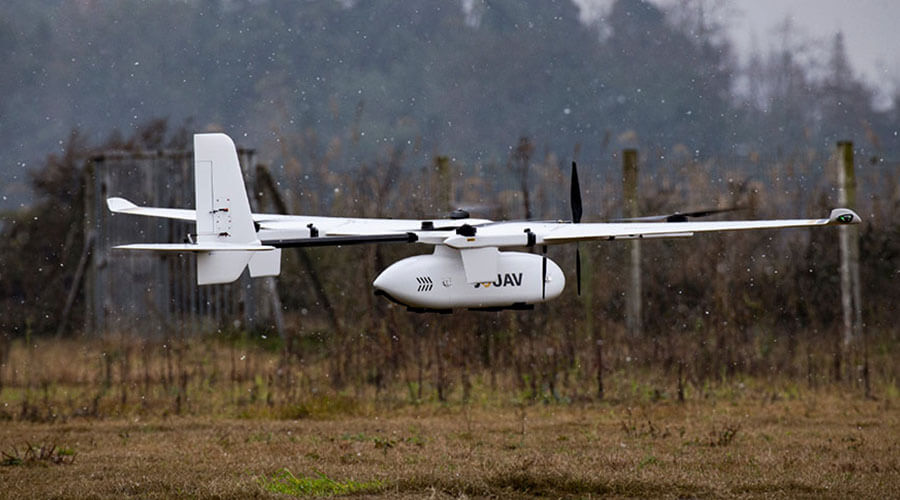
- Max. Takeoff altitude/Ceiling: 4500m/6500m
- Video transmission range: 50km
- Payload: 3kg
- Endurance: 180min
- Cruising speed:61.2km/h
JOUAV CW-25 VTOL - High-Altitude Long-Endurance Drone (6500 Meters)
When endurance meets altitude, the JOUAV CW-25 VTOL takes the spotlight. With a max takeoff altitude of 4500 meters (and a ceiling of 6500 meters), this drone is built for long-range surveillance. Powered by an efficient EFI gasoline engine, it delivers reliable and extended flight times ranging from 330 to 360 minutes.
The MG-120E dual gimbal camera ensures exceptional image quality, and with a video transmission range of up to 100 kilometers, you can maintain a clear connection even over vast distances. Featuring obstacle avoidance technology and the ability to vertically take off and land on moving ships, the CW-25 is a versatile companion for any surveillance operation.
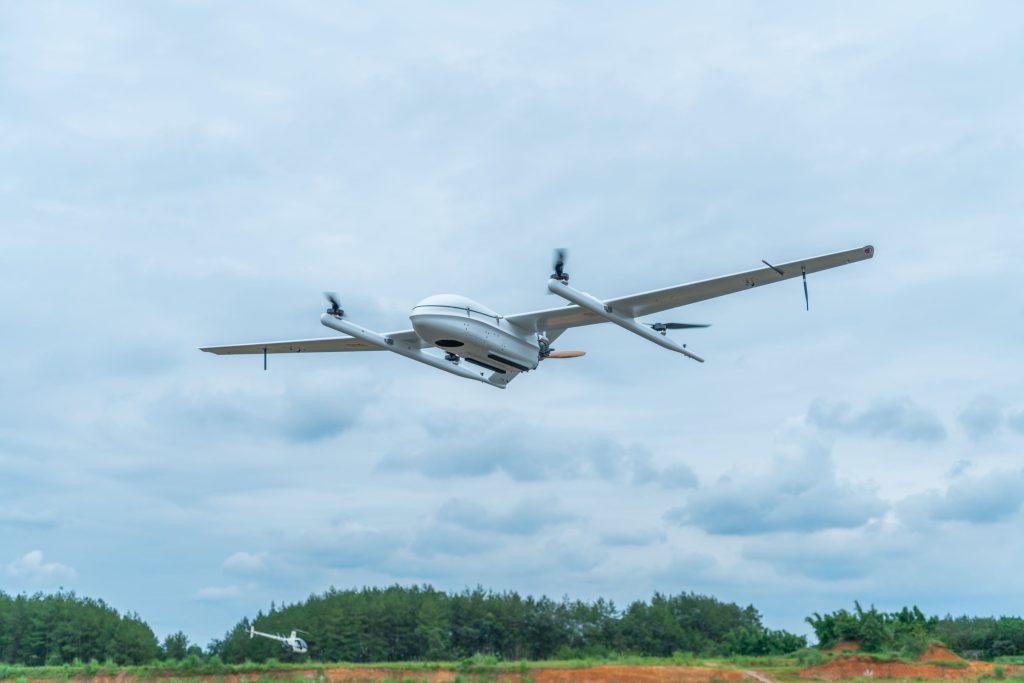
- Max. Takeoff altitude/Ceiling: 4500m/6500m
- Video transmission range: 100km
- Payload: 6kg
- Endurance: 330-360min
- Cruising speed: 82.8km/h
JOUAV CW-30E VTOL - High-Altitude Long-Range Drone (6000 Meters)
For those seeking high-altitude, long-range surveillance capabilities, the JOUAV CW-30E is the go-to option. With a max takeoff altitude of 3500 meters (and a ceiling of 6000 meters), this drone is designed to reach new heights. It boasts an impressive payload capacity of 8 kilograms and an endurance of up to 480 minutes, allowing for extended flight times and the flexibility to carry heavier equipment.
The MG-120E dual gimbal camera, equipped with AI recognition and tracking, ensures you capture every important detail. With a video transmission range of up to 200 kilometers, this drone keeps you connected even over vast distances. Additionally, its obstacle avoidance systems and the ability to vertically take off and land on moving ships make it a reliable choice for challenging surveillance missions.
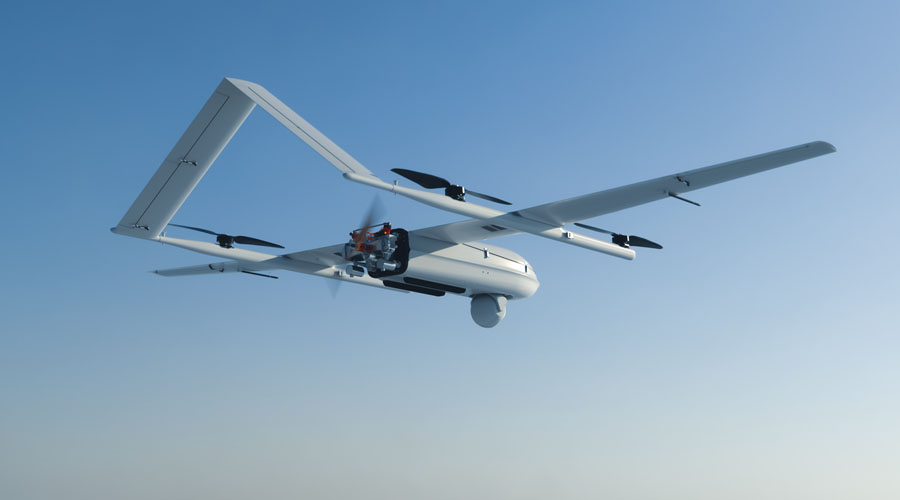
- Max. Takeoff altitude/Ceiling: 3500m/6000m
- Video transmission range: 200km
- Payload: 8kg
- Endurance: 480min
- Cruising speed: 90km/h
JOUAV PH-7E - Highest Flying Quadcopter with 1K Thermal Camera (5000 Meters)
For those who prefer the nimble versatility of a quadcopter, the JOUAV PH-7E is the highest-flying option you can get. With a maximum takeoff altitude of 5000 meters, this compact and lightweight drone is a powerhouse in the sky.
Equipped with a 1K thermal camera, it excels in capturing heat signatures and providing invaluable insights. The impressive video transmission range of up to 15km ensures you stay connected, while the 21TOPS computing power enables advanced features like power defect recognition and human face recognition.
- Click to learn more about the Top 5 thermal drones of 2023
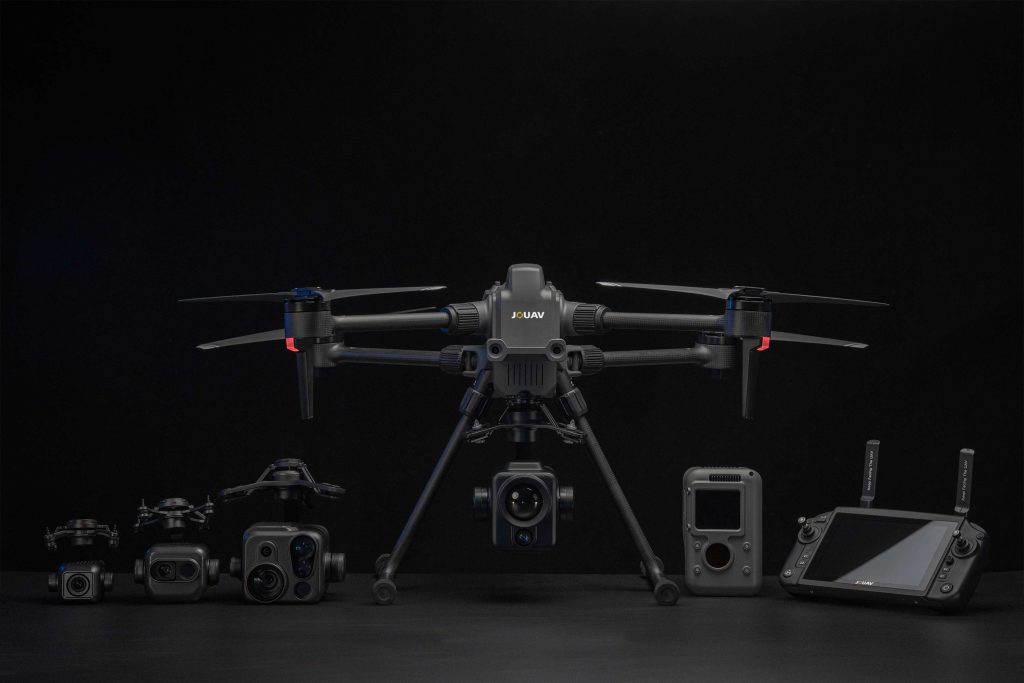
- Max. Takeoff altitude: 5000m
- Video transmission range: 15km
- Payload: 3kg
- Endurance: 63min
- Cruising speed: 72km/h (sport mode, horizontal/no wind)
FAQ
Can a drone fly 20,000 feet?
Commercial drones available today typically have altitude capabilities that can reach up to 20,000 feet. However, it's essential to note that the exact maximum altitude can vary between different drone models. Always refer to the specifications provided by the drone manufacturer to determine the specific altitude limits for your drone.
Can a drone fly 40,000 feet?
Generally speaking, most civilian or commercial drones do not have the capability to fly as high as 40,000 feet. Altitudes in that range are typically within the realm of military-grade drones. Military drones are designed for specialized operations and can often reach altitudes of up to 50,000 feet or higher. However, it's important to remember that specific altitude limits can vary depending on the drone model and its purpose.
Who is responsible for making sure a drone does not fly too high?
The responsibility for ensuring that a drone does not fly too high primarily falls on the operator of the drone and the relevant aviation authorities in a given country. Here are the key players and their roles in regulating and enforcing drone flight altitude limits:
Drone Operator: The person or entity operating the drone is responsible for ensuring that they comply with local regulations regarding maximum flight altitudes. They should be aware of and adhere to the altitude limits set by their country's aviation authority. Many drones also come with built-in software and geofencing features that restrict their altitude in certain areas.
Civil Aviation Authority: In most countries, the civil aviation authority, such as the Federal Aviation Administration (FAA) in the United States, the Civil Aviation Authority (CAA) in the UK, or similar agencies, establishes regulations and guidelines for drone operations. These agencies set specific maximum altitude limits that drone operators must follow. They also monitor and enforce these regulations, often through registration requirements, licensing, and sanctions for violations.
Geofencing and Software: Many drones are equipped with geofencing technology and software that restrict their flight altitude in certain areas or near sensitive locations, such as airports, military bases, or government buildings. These features are designed to enhance safety and prevent drones from flying too high or entering restricted airspace.
Air Traffic Control: In some cases, air traffic controllers may become involved if a drone poses a safety risk to manned aircraft. They can communicate with drone operators to ensure safe separation between drones and traditional aircraft, especially in controlled airspace.
It's important for drone operators to be well-informed about the regulations specific to their location and the capabilities of their drone. Ignoring altitude restrictions or flying a drone too high can pose safety risks and legal consequences.
Can drones fly above 400 feet?
Under normal circumstances and in most countries, consumer drones are not allowed to fly above 400 feet above ground level. This limit is set by regulatory authorities, such as the FAA in the United States, to ensure the safety of airspace and prevent conflicts with manned aircraft. However, there may be exceptions to this rule, such as when operators receive specific waivers or authorizations for certain purposes or in controlled airspace. It's essential for drone pilots to understand and comply with the regulations and altitude restrictions in their respective jurisdictions.
How do drones determine altitude?
Drones typically determine their altitude using a combination of sensors and technologies. The most common method involves using an altimeter, which measures air pressure changes to estimate the drone's height above ground level. Barometric pressure sensors in the drone's flight controller can detect changes in atmospheric pressure as the drone ascends or descends. These measurements are then used to calculate the drone's relative altitude.
In addition to barometric sensors, some drones may incorporate other technologies like GPS (Global Positioning System) or radar sensors to enhance altitude measurement and positioning accuracy. GPS allows drones to determine their altitude based on satellite signals, while radar sensors can provide precise altitude information by detecting the distance between the drone and the ground or other objects.
What is the best altitude for a drone?
The best altitude for a drone depends on several factors, including the purpose of the flight and the specific requirements of the operation. For most recreational or aerial photography purposes, flying at lower altitudes, such as 100-200 feet, can provide excellent results, capturing detailed images and videos. However, for certain applications like aerial mapping, higher altitudes may be preferred to cover larger areas efficiently.
How far can a drone fly up in the air?
The distance a drone can fly in the air depends on multiple factors, including its battery life, the type of drone, and the flight conditions. Consumer drones typically have flight ranges of several kilometers, allowing them to cover considerable distances. However, it's important to consider battery limitations, as the drone needs sufficient power to return safely to the point of takeoff. Professional-grade drones or long-range drones designed for specific applications may have extended flight ranges, sometimes reaching tens of kilometers.
What Does a Drone See from 400 Feet?
From a drone's perspective at 400 feet, the view can be quite remarkable. At this altitude, you can capture sweeping aerial vistas, stunning landscape shots, and unique perspectives that are otherwise inaccessible from the ground. Objects on the ground may appear smaller, providing a broader context and a sense of scale. It's an excellent height for capturing wide-angle shots, aerial panoramas, and top-down images of landscapes, buildings, or events. However, it's important to respect privacy, adhere to local regulations, and fly responsibly to ensure a positive and safe experience for everyone.



